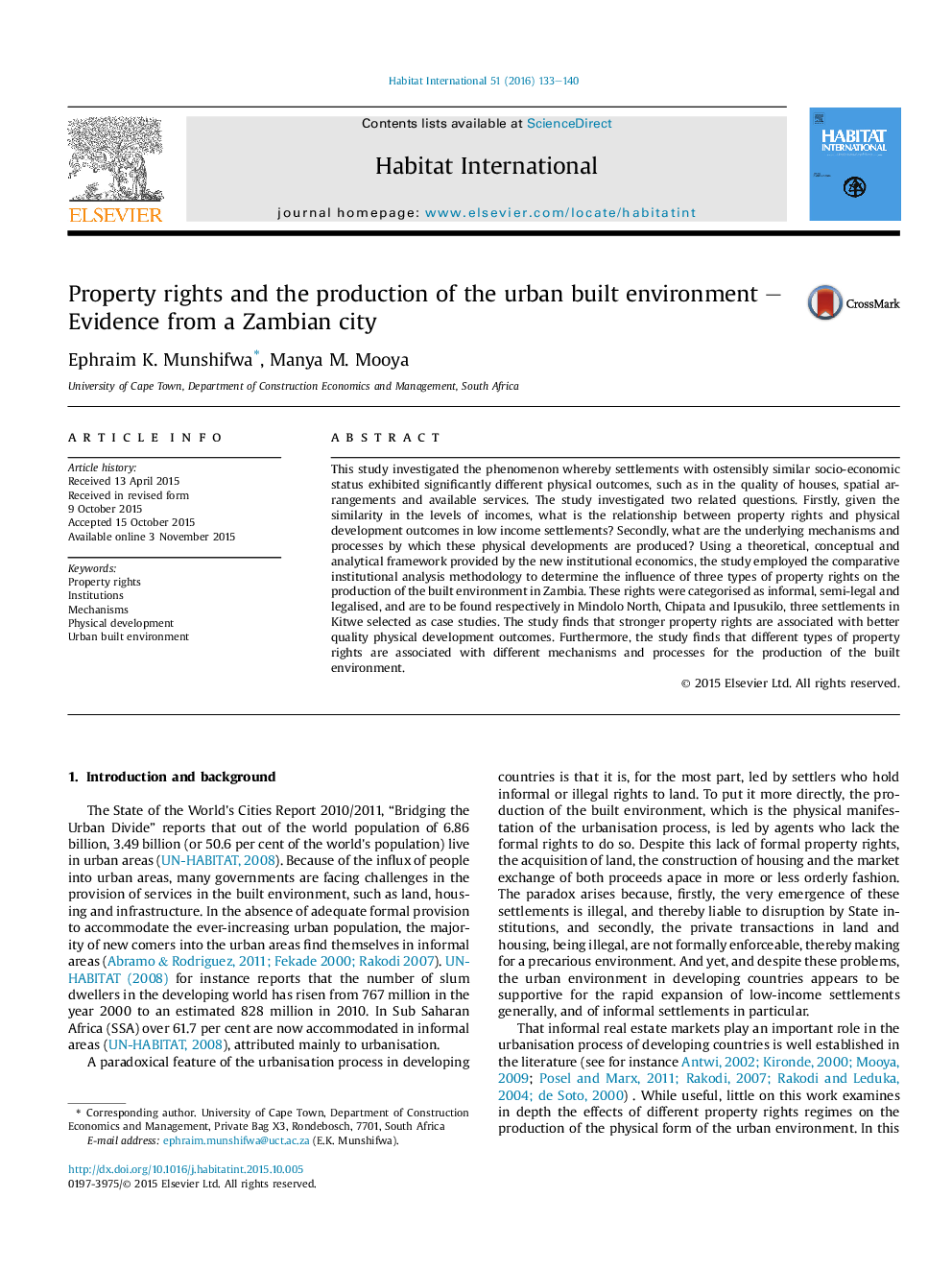| Article ID | Journal | Published Year | Pages | File Type |
|---|---|---|---|---|
| 1047666 | Habitat International | 2016 | 8 Pages |
•Investigates settlements with similar socioeconomic status but different outcomes.•Employs a comparative institutional analysis methodology.•Finds that stronger property rights are associated with better development outcomes.•Finds that different types of property rights are associated with different mechanisms.
This study investigated the phenomenon whereby settlements with ostensibly similar socio-economic status exhibited significantly different physical outcomes, such as in the quality of houses, spatial arrangements and available services. The study investigated two related questions. Firstly, given the similarity in the levels of incomes, what is the relationship between property rights and physical development outcomes in low income settlements? Secondly, what are the underlying mechanisms and processes by which these physical developments are produced? Using a theoretical, conceptual and analytical framework provided by the new institutional economics, the study employed the comparative institutional analysis methodology to determine the influence of three types of property rights on the production of the built environment in Zambia. These rights were categorised as informal, semi-legal and legalised, and are to be found respectively in Mindolo North, Chipata and Ipusukilo, three settlements in Kitwe selected as case studies. The study finds that stronger property rights are associated with better quality physical development outcomes. Furthermore, the study finds that different types of property rights are associated with different mechanisms and processes for the production of the built environment.
